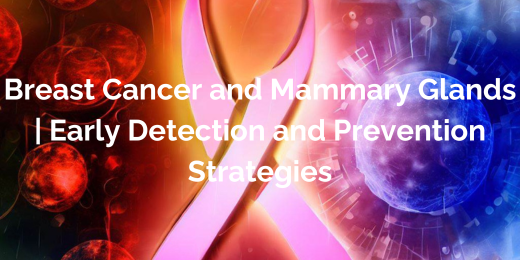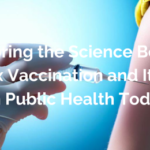Early detection of breast cancer
Breast cancer remains the most typical type of cancer in females. The World Health Organization (WHO) estimates that 2.3 million women receive a breast cancer diagnosis each year. Due to the severity of breast cancer, early detection and preventative measures are essential. In today’s post, we will explore the importance of early detection of breast cancer, the application of preventive measures, and how doing so can ultimately help save lives.
Introduction
One type of cancer that arises in the breast cells is breast cancer. After lung cancer, it is the second leading cause of cancer-related death among females globally. Breast cancer can affect men and women; however, the male version is much less prevalent. Individuals with breast cancer who are diagnosed early have a better prognosis and a higher chance of survival. Routine breast self-examinations and mammography are the most remarkable ways to detect breast cancer in its early stages and give patients the best chance of a successful course of therapy.
What is Breast Cancer?
Breast cells can become cancerous and evolve into breast cancer. The breast contains a variety of tissues, including ducts that transfer milk from the breast to the nipple and glandular tissue that produces milk. Breast cancer can manifest itself in any of these tissues.
The most common type of breast cancer is ductal carcinoma, which begins in the cells that line the milk ducts. Lobular carcinoma is another type of breast cancer. This type of breast cancer arises in the lobules or milk-producing glands. Breast cancer has the potential to grow in other breast tissues as well. In addition to understanding different types of breast cancer, it’s essential for women to follow healthy aging tips, such as maintaining a balanced diet, staying physically active, managing stress, and scheduling regular health check-ups, to prioritize overall well-being, including breast health.
Early detection of Breast Cancer
Early detection of Breast Cancer is critical for the development of effective treatment and a higher chance of survival. Beginning at 40, the American Cancer Society advises women to get mammograms as a breast cancer screening test. Mammography is a type of X-ray of the breast that can detect early signs of breast cancer, such as lumps or changes in the breast tissue.
Women with a significant chance of acquiring breast cancer are screened with mammograms. Also, women should perform regular breast self-exams to monitor any changes or abnormalities that may emerge in their breasts.
Prevention Strategies
One strategy for preventing breast cancer is maintaining a healthy lifestyle, including frequent exercise and consuming nutritious foods. Because alcohol consumption is linked to an increased risk of breast cancer, women who drink alcohol should limit their consumption.
Women with a background of breast cancer in their families or who are BRCA1 or BRCA2 carriers ought to consider genetic counselling and testing. Breast cancer prevention medicines are another option for women who are at high risk of acquiring the disease. Similarly, what you eat is what you are, as your diet plays a significant role in shaping your health and overall well-being.
Treatment Options
The patient’s overall health and cancer stage determine the various breast cancer treatment options. Breast cancer can be treated in multiple ways, the most common of which include surgical tumour removal, radiation therapy, chemotherapy, and hormone therapy. High-energy radiation is used in radiation treatment to eliminate cancer cells, whereas surgery removes cancerous tissue from the breast.
Radiation therapy necessitates the surgical removal of diseased tissue. Chemotherapy uses chemicals to kill cancer cells, whereas hormone therapy uses medications to prevent the hormones that encourage the formation of breast cancer cells.
Conclusion
The awful illness known as breast cancer affects millions of people worldwide. Early detection and the execution of preventative measures are critical for effective treatment and a higher chance of survival. It is recommended that women obtain routine mammograms and inspect their breasts regularly to detect early warning symptoms of breast cancer.
Maintaining a healthy lifestyle and limiting alcohol consumption are two more factors that can help reduce one’s risk of acquiring breast cancer. Women with a high chance of developing breast cancer should look into preventative treatment, as well as genetic counselling and testing. Breast cancer is a treatable disease, and it is feasible to save lives by diagnosing it early and implementing preventative steps.



